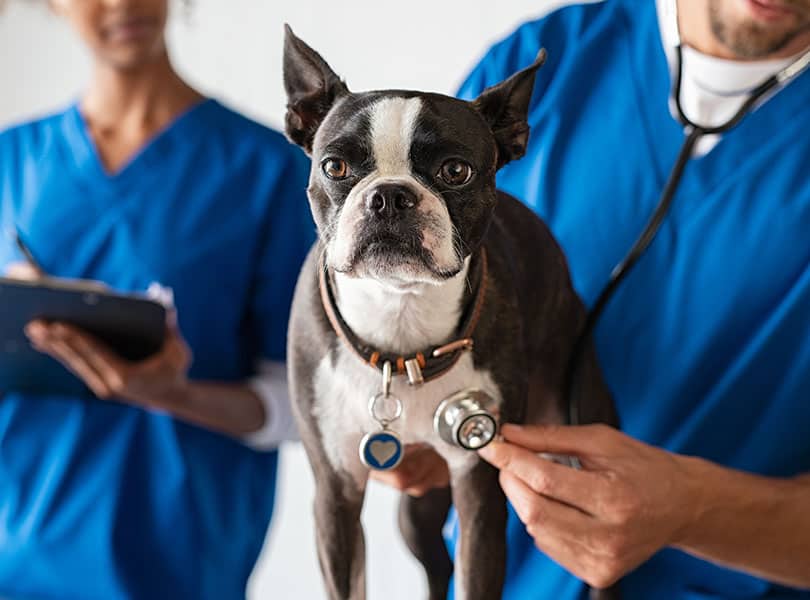A Pet Owner’s Guide to the Cost and Purpose of CT Scans For Animals}
The Duty of Ultrasound and CT Check in Modern Veterinary Practices: Insights From Experienced Professionals
In modern-day vet techniques, ultrasound and CT scans substantially boost analysis abilities. These imaging techniques provide vital insights into animal wellness, assisting treatment decisions. Experienced experts identify the one-of-a-kind benefits of each method. Ultrasound offers real-time analyses, while CT scans deliver detailed physiological details. Recognizing their duties and applications elevates crucial inquiries concerning their influence on person end results and the future of vet diagnostics. What understandings can be gotten from their integrated use?
Comprehending Ultrasound in Veterinary Medication
Ultrasound is a necessary analysis tool in veterinary medicine, using a non-invasive technique to imagine internal structures. This imaging technique employs high-frequency sound waves to produce real-time photos of tissues and body organs, allowing veterinarians to assess problems without surgical treatment. Typical applications include assessing the heart, liver, kidneys, and reproductive organs, in addition to keeping track of pregnancies.The procedure is reasonably fast and can be done in different setups, making it an obtainable option for veterinarians. Unlike radiography, ultrasound gives thorough info about soft tissues and blood circulation, which is crucial for precise diagnoses.Veterinary experts rely upon ultrasound to spot problems such as tumors, cysts, and fluid buildup. Its capability to guide biopsies and other treatments additionally enhances its utility in clinical technique. By using a reliable and risk-free way to take a look at interior makeup, ultrasound has actually become a foundation of modern vet diagnostics.
The Advantages of CT Scans for Animal Diagnostics
CT checks offer considerable benefits in vet diagnostics by providing improved precision in recognizing internal conditions (CT Scans For Dogs). As a non-invasive imaging strategy, they ensure the safety and security and comfort of animals during assessments. Additionally, CT scans facilitate a complete assessment of interior structures, permitting for a lot more reliable therapy preparation
Boosted Diagnostic Accuracy
Developments in imaging modern technology have actually considerably boosted analysis accuracy in veterinary medicine, especially via using CT scans. These scans give detailed cross-sectional photos of a pet's interior structures, allowing veterinarians to determine abnormalities with accuracy. The high resolution and three-dimensional abilities of CT imaging assist in the detection of conditions such as tumors, fractures, and inner blood loss that might be missed out on with typical imaging techniques. Furthermore, CT scans can help in pre-surgical planning by offering a comprehensive sight of anatomical relationships. This degree of detail not just enhances the accuracy of medical diagnoses but also aids in customizing reliable therapy plans. The combination of CT technology right into veterinary techniques is changing the landscape of pet health care, improving outcomes for patients.
Non-Invasive Imaging Strategy
The intro of non-invasive imaging techniques has reinvented animal diagnostics, with CT scans arising as a noticeable device in veterinary methods. These scans supply high-resolution, cross-sectional pictures of an animal's interior structures, permitting veterinarians to examine complex problems without the demand for invasive procedures. The advantages of CT scans include their ability to spot tumors, cracks, and inner bleeding with remarkable precision. In addition, they facilitate the assessment of soft cells and organs, improving diagnostic capacities. The speed of CT scanning allows quick decision-making, which is essential in emergency situations. By lessening stress and pain for the animal, CT scans add to a more humane strategy to diagnostics, eventually boosting treatment results and advancing vet care.
Comprehensive Internal Evaluation
A complete interior analysis is important for exact diagnosis and efficient therapy in veterinary medicine. CT scans deal significant advantages in this respect, providing in-depth cross-sectional photos of an animal's interior frameworks. This innovative imaging modality enhances visualization of complicated physiological areas, enabling veterinarians to determine problems such as tumors, cracks, and internal blood loss with greater accuracy. Furthermore, CT checks help with the assessment of problems that might be challenging to identify via traditional methods. The rate and precision of CT imaging additionally add to timely interventions, improving client end results. As vet techniques increasingly integrate CT modern technology, the advantages of considerable inner analyses come to be evident, reinforcing the importance of this tool in modern vet diagnostics.
Contrasting Ultrasound and CT Imaging Techniques
While both ultrasound and CT imaging offer crucial duties in vet diagnostics, each technique provides unique advantages and limitations that can affect clinical decision-making. Ultrasound is especially valued for its real-time imaging capabilities, allowing veterinarians to observe vibrant physiological procedures. This technique is non-invasive, mobile, and does not include ionizing radiation, making it a much safer alternative for both pets and clinicians. Ultrasound may have restrictions in visualizing particular anatomical frameworks or deep tissues.Conversely, CT imaging provides comprehensive cross-sectional sights of the body, allowing for exact localization of problems. It stands out in evaluating complicated organs and frameworks, particularly in the thorax and abdominal area. CT scans call for sedation or anesthesia in lots of instances and entail direct exposure to ionizing radiation. Ultimately, the option in between ultrasound and CT depends on the certain professional scenario, the area of passion, and the urgency of the analysis needs.
Case Studies: Effective Medical Diagnoses With Imaging
Study highlight the substantial improvements in analysis precision attained with innovative imaging technologies like ultrasound and CT scans in veterinary practices. These innovations not just enhance the detection of various conditions yet additionally facilitate timely and reliable therapy strategies. Evaluating certain situations can highlight the transformative influence of these imaging strategies on veterinary medicine.
Diagnostic Precision Improvements

Imaging Innovation Advancements
As vet imaging technology remains to evolve, its effect on diagnostic capacities becomes increasingly evident. Current instance researches highlight the effective application of sophisticated ultrasound and CT scan methods in determining complicated conditions. As an example, a veterinary facility made use of high-resolution CT scans to detect a rare form of lung cancer cells in a pet dog, which traditional imaging had missed. An ultrasound exam exposed an abdominal mass in a feline, prompting timely medical treatment and a positive outcome. These improvements not just enhance analysis accuracy however additionally allow veterinarians to develop targeted therapy plans. By leveraging cutting-edge imaging technologies, veterinary specialists are significantly improving person treatment, leading to extra efficient management of different health and wellness problems in animals.
The Function of Imaging in Emergency Veterinary Treatment
Imaging plays a crucial function in emergency situation veterinary care, offering vets with essential info required to make quick, educated decisions. In urgent circumstances, strategies like ultrasound and CT scans enable professionals to quickly examine a pet dog's internal structures, determining critical problems such as inner bleeding, cracks, or body organ abnormalities. These imaging techniques permit for real-time assessments, promoting timely treatments that can be life-saving. As an example, ultrasound is vital for evaluating soft cells injuries and problems like liquid accumulation, while CT scans offer comprehensive pictures of complicated get redirected here physiological frameworks, crucial for detecting trauma situations. The speed and accuracy of these imaging strategies improve the veterinarian's capacity to devise reliable therapy strategies, making sure the finest possible end results for their patients. Consequently, the integration of innovative imaging innovations right into emergency veterinary techniques is not just beneficial yet significantly necessary, as it boosts analysis capabilities and boosts overall pet care during crucial moments.
Training and Knowledge in Vet Imaging
Advanced imaging techniques such as have a peek here ultrasound and CT scans are vital for reliable veterinary treatment, the effective implementation of these technologies heavily depends on the training and experience of vet professionals. Skilled use imaging tools requires comprehensive expertise of composition, pathology, and the concepts underlying each method. Vet professionals must undergo specialized training to properly analyze imaging outcomes, which is important for diagnosing conditions and planning treatment.Certifications and continuing education in vet imaging improve the abilities of practitioners, enabling them to remain updated with technological advancements. Collaboration between radiologists and veterinarians usually brings about boosted diagnostic precision, as experts can provide insights into complex cases. On top of that, sensible experience in taking care of imaging equipment cultivates self-confidence in its application. Inevitably, the top quality of vet imaging services is directly associated to the level of training and expertise had by the specialists using these important diagnostic devices.
Future Fads in Diagnostic Imaging for Animals
With the fast developments in technology, vet analysis imaging is poised for substantial evolution in the coming years. Arising patterns show a shift in the direction of even more mobile and accessible imaging methods, such as handheld ultrasound tools, which might improve field diagnostics. Furthermore, the integration of expert system is expected to change picture analysis, permitting for quicker and a lot more accurate analyses of results.Moreover, developments in 3D imaging strategies and calculated tomography will certainly provide veterinarians with more detailed views of animal anatomy, causing improved treatment plans. Digital truth technology may also contribute in surgical preparation and education and learning, providing vets a special perspective on complicated cases.As telemedicine remains to expand, remote examinations facilitated by diagnostic imaging will certainly become extra typical, enabling experts to aid family doctors in real-time. In general, these fads are set to improve the performance and effectiveness of veterinary treatment, inevitably improving pet results.
Regularly Asked Concerns
Just How Much Do Ultrasound and CT Scans Cost in Veterinary Clinics?
The expenses of ultrasound and CT scans in vet clinics commonly range from $300 to $1,500, depending upon elements such as area, facility kind, and specific treatments required for the animal's diagnosis and a knockout post treatment.

Are There Any Risks Linked With Ultrasound and CT Checks for Family Pets?
Ultrasound and CT scans normally position minimal threats to pet dogs. Nevertheless, prospective problems consist of sedation reactions and direct exposure to anesthetics. CT Scans For Animals. Vets carefully examine each case to minimize any dangers related to these analysis procedures
The Length Of Time Do Ultrasound and CT Procedures Usually Take?
Ultrasound treatments usually take about half an hour to an hour, depending on the intricacy. CT scans, being more in-depth, usually need 30 mins to 90 mins, including prep work and recovery time for the pet.
Can All Veterinarians Perform Ultrasounds and CT Scans?
Not all vets can perform ultrasounds and CT scans. Specialized training and qualification are typically required to assure competency in these advanced imaging methods, which may restrict their accessibility to vets with additional credentials and resources.
What Kinds of Animals Benefit A Lot Of From These Imaging Techniques?
Particular pet types, specifically pets and felines, benefit considerably from ultrasound and CT scans. These imaging techniques boost analysis accuracy for problems like lumps, internal injuries, and organ abnormalities, leading to better treatment end results and person treatment. The high resolution and three-dimensional abilities of CT imaging assist in the discovery of problems such as growths, fractures, and inner blood loss that might be missed out on with traditional imaging methods. Case research studies highlight the significant enhancements in diagnostic accuracy accomplished via innovative imaging innovations like ultrasound and CT scans in veterinary practices. Improving analysis precision in vet methods has actually been substantially aided by innovations in imaging modern technologies such as ultrasound and CT scans. Advanced imaging strategies such as ultrasound and CT scans are essential for reliable vet treatment, the successful implementation of these modern technologies heavily depends on the training and experience of veterinary experts. Vet specialists should undertake specific training to precisely translate imaging results, which is crucial for diagnosing conditions and planning treatment.Certifications and proceeding education and learning in vet imaging improve the abilities of professionals, enabling them to remain updated with technical improvements.